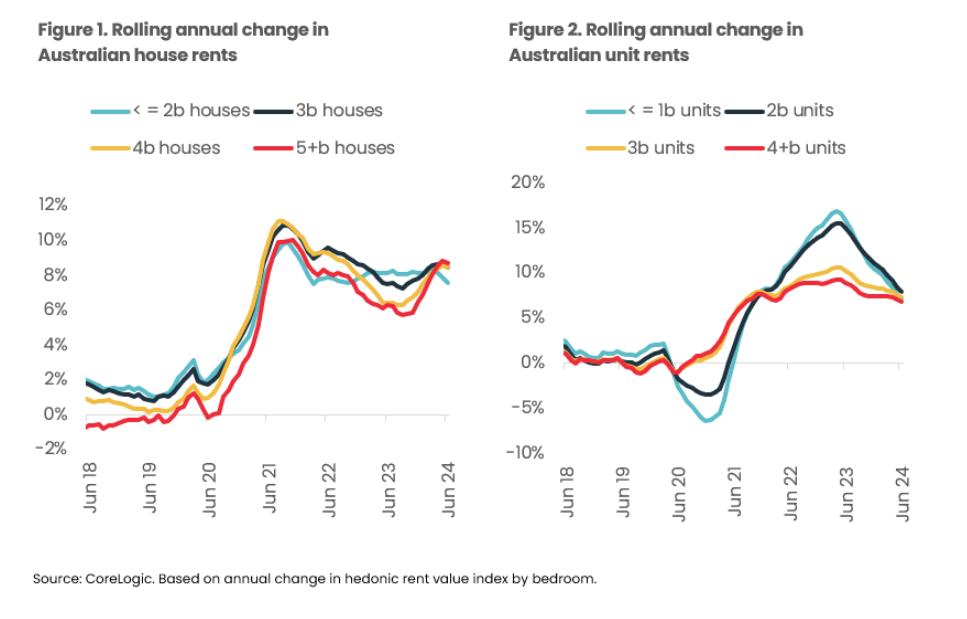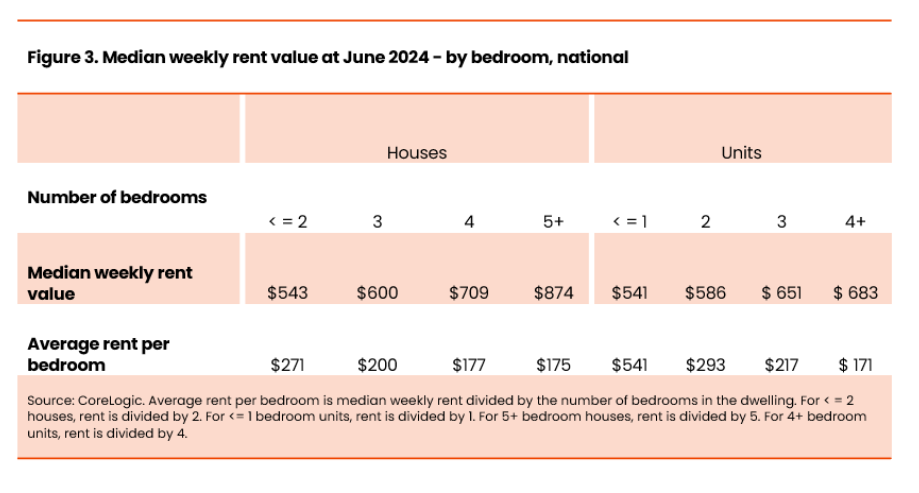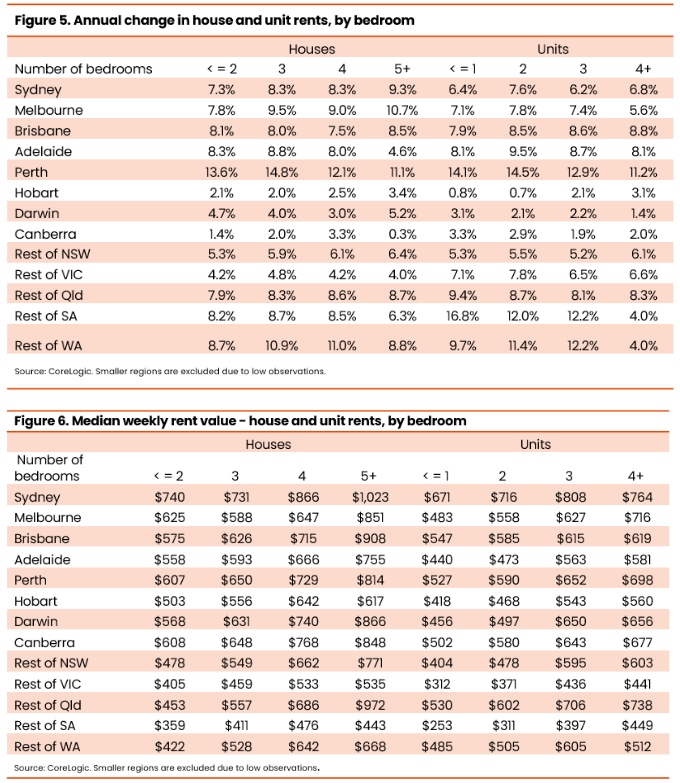

New CoreLogic analysis revealed stronger rental growth trends in larger dwellings, with a significant 8.7% rise in rent for houses with five bedrooms or more.
This trend suggests the formation of share houses or multiple family households amid the cost-of-living squeeze.
The rental growth for smaller dwellings has slowed substantially.
Annual growth in one-bedroom units and studios has decreased from 16.8% in the year to April 2023 to 7.1% in the past 12 months.
Despite the slowdown, two-bedroom units maintained the highest rent growth on a national level.
The average rent per bedroom becomes cheaper the more bedrooms a dwelling has.
“Rental affordability continues to deteriorate in Australia,” said Eliza Owen (pictured above) from CoreLogic, in a media release.

The national median weekly rent values reached a record high of $634 per week in June, up $48 from a year ago, CoreLogic reported.
Larger rental properties are showing more resilient rent growth, which may be more feasible for renters in shared households or multi-generational households.
“Large rental properties may actually be more feasible for renters in share situations,” Owen said.

CoreLogic figures showed a mixed picture by region.
NSW and Queensland led the trend of higher rent growth in larger houses, with Melbourne also showing significant growth for houses with five or more bedrooms.
However, in cities like Perth and Adelaide, where larger house rents are underperforming, there might eventually be a shift to higher demand for larger dwellings.
For a detailed analysis, including additional commentary and graphs on the percentage change in rent values by bedroom count across houses and units, read the CoreLogic report here.

Get the hottest and freshest mortgage news delivered right into your inbox. Subscribe now to our FREE daily newsletter.
